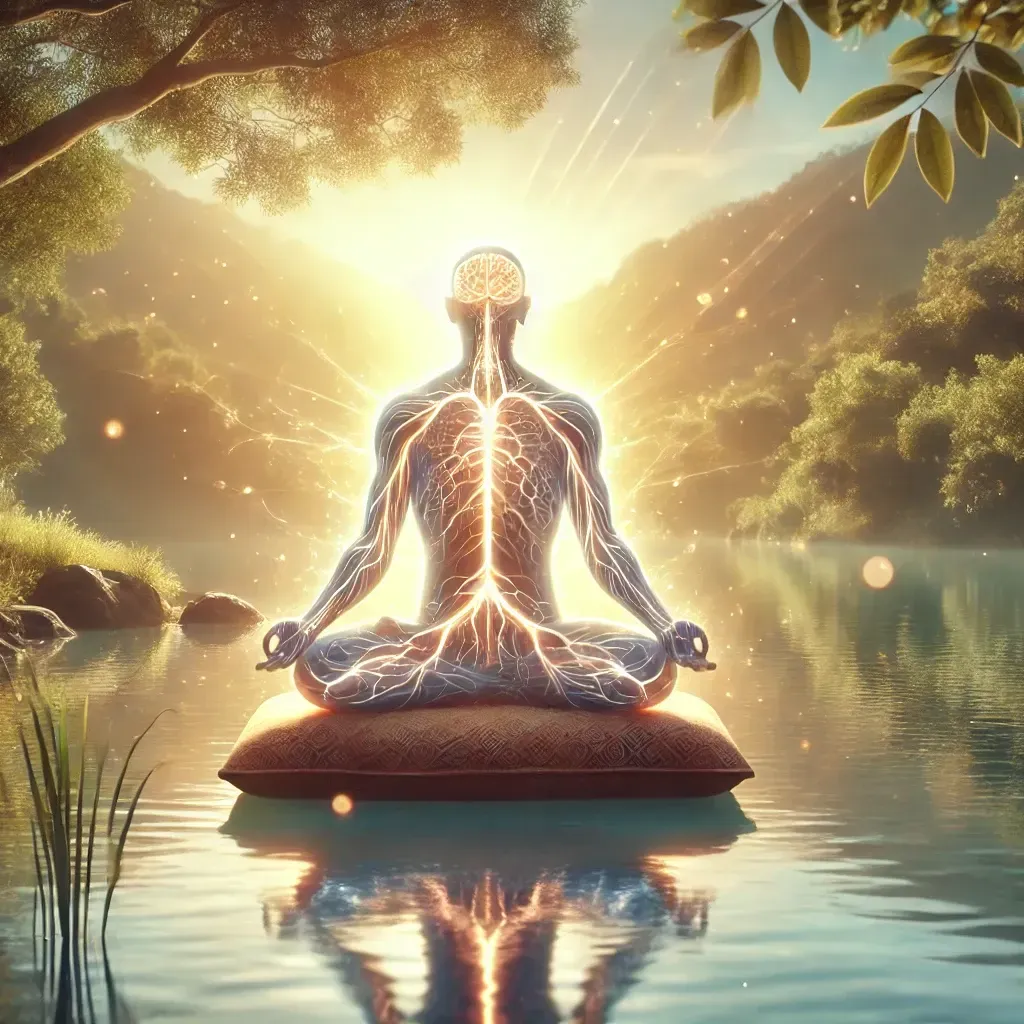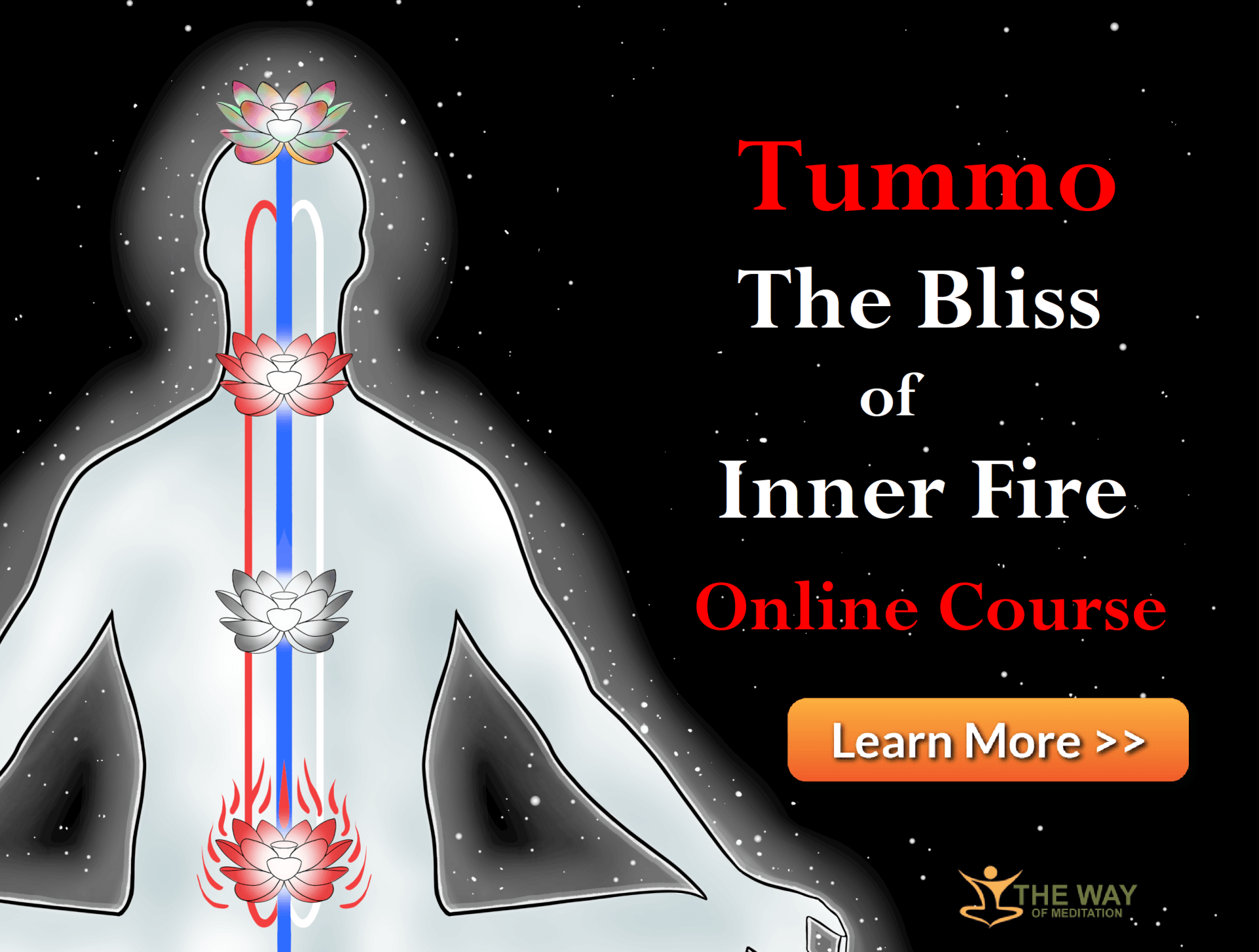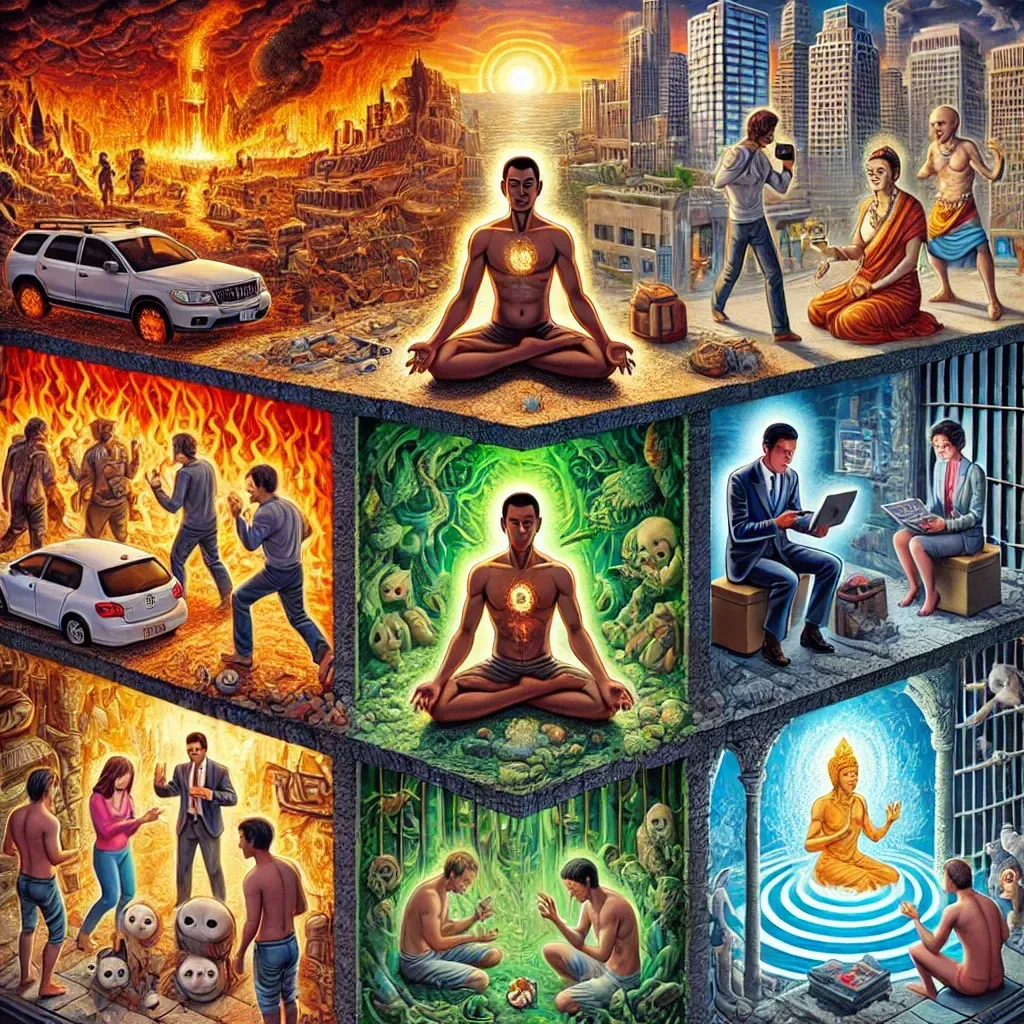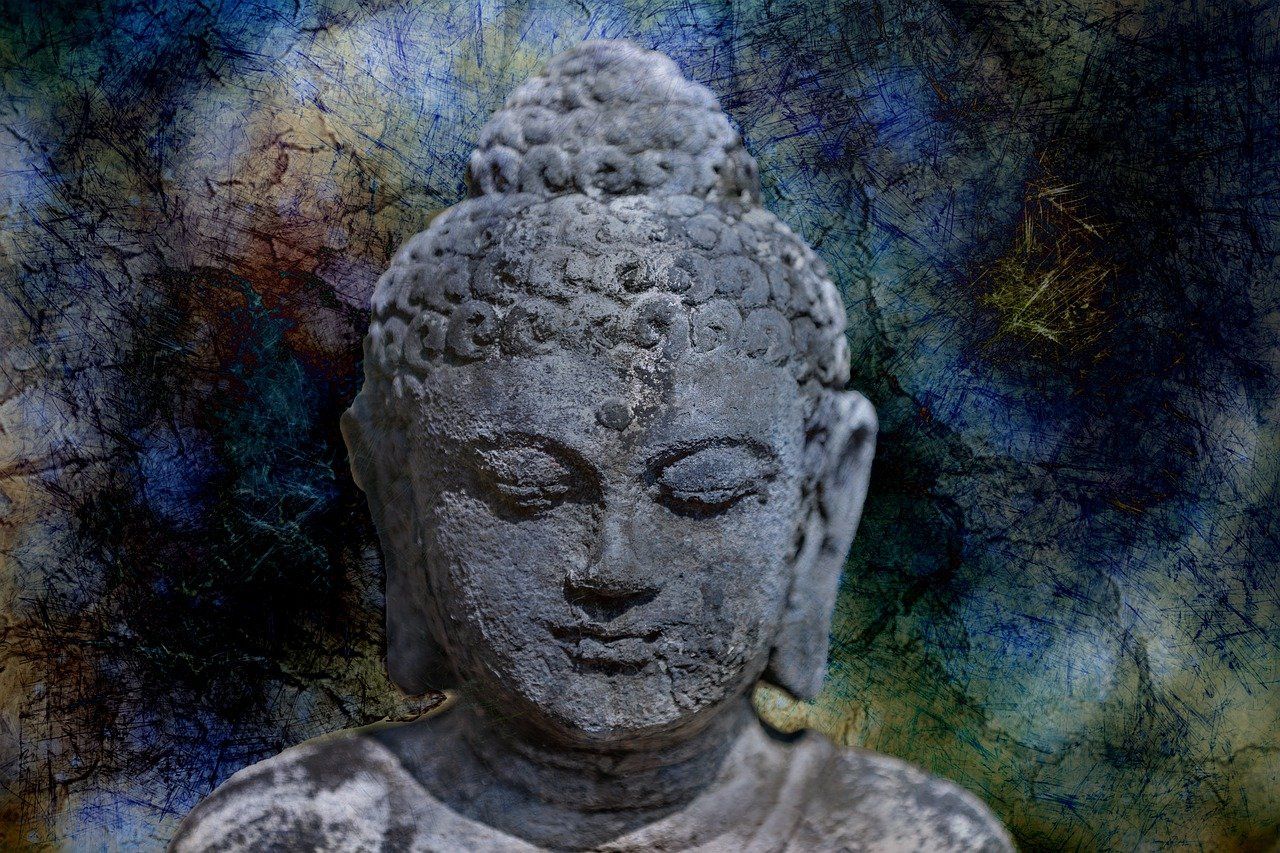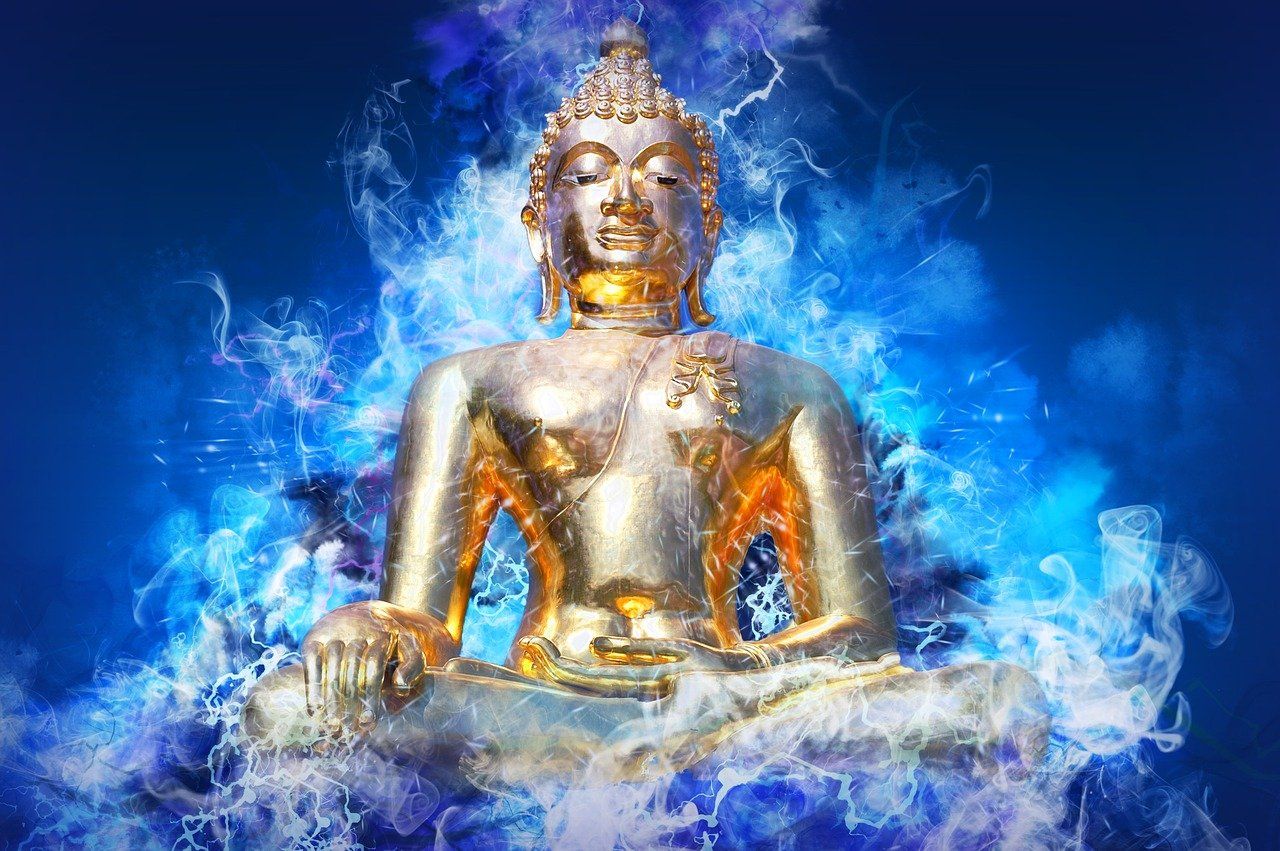The Ancient Powerful Practices of Hindu Meditation
Hindu Meditation
Hinduism is a religion, or a way of life, found most notably in India and Nepal. With approximately one billion followers, Hinduism is the world’s third largest religion by population, and the majority religion in India, Nepal and Bali (Indonesia). Hinduism has been called the “oldest religion” in the world, and some practitioners and scholars refer to it as Sanātana Dharma, “the eternal law” or the “eternal way” beyond human origins.
Most notably yoga and meditation have emerged as popular spiritual practices in modern times that stem from the Hinduism. Below is an outline of the rich and varied types of meditation from the Hindu tradition, how to do them and includes links to further resources to help you on your path:
Mantra Meditation (OM Meditation)
Origin & Meaning
A mantra
is a syllable or word, usually without any particular meaning, that is repeated for the purpose of focusing your mind. It is not
an affirmation used to convince yourself of something.
Some meditation teachers insist that both the choice of word, and its correct pronunciation, is very important, due to the “vibration” associated to the sound and meaning, and that for this reason an initiation into it is essential. Others say that the mantra itself is only a tool to focus the mind, and the chosen word is completely irrelevant.
Mantras are used in Hindu traditions, Buddhist traditions (especially Tibetan and “Pure Land” Buddhism), as well as in Jainism, Sikhism and Daoism (Taoism). Some people call mantra meditation “om meditation”, but that is just one of the mantras that can be used. A more devotion oriented practice of mantras is called japa, and consists of repeating sacred sounds (name of God) with love.
How to do it
As most type of meditations, it is usually practiced sitting with spine erect, and eyes closed. The practitioner then repeats the mantra in his mind, silently, over and over again during the whole session.
Sometimes this practice is coupled with being aware of the breathing or coordinating with it. In other exercises, the mantra is actually whispered very lightly and softly, as an aid to concentration.
As you repeat the mantra, it creates a mental vibration that allows the mind to experience deeper levels of awareness. As you meditate, the mantra becomes increasingly abstract and indistinct, until you’re finally led into the field of pure consciousness from which the vibration arose.
Repetition of the mantra helps you disconnect from the thoughts filling your mind so that perhaps you may slip into the gap between thoughts. The mantra is a tool to support your meditation practice. Mantras can be viewed as ancient power words with subtle intentions that help us connect to spirit, the source of everything in the universe. (Deepak Chopra)
Here are some of the most well-known mantras from the Hindu tradition:
- om
- so-ham
- om namah shivaya
- om mani padme hum
- rama
- yam
- ham
You may practice for a certain period of time, or for a set number of “repetitions” – traditionally 108 or 1008. In the latter case, beads are typically used for keeping count.
As the practice deepens, you may find that the mantra continues “by itself” like the humming of the mind. Or the mantra may even disappear, and you are left in a state of deep inner peace.
Learn more:
Is it for me?
People usually find that it is easier to focus with a mantra than with the breathing. Because a mantra is a word, and thoughts are usually perceived as words, it can be easier to keep the focus on a mantra rather than on the breathing. It is useful especially when the mind is racing with many thoughts, since it mantra meditation demands constant attention.
Meditating with a mantra can also make it simpler to integrate your meditative state into your daily life. In whatever activity you find yourself into, it can be as simple as repeating the mantra in your mind.
Transcendental Meditation (TM)
Origin & Meaning
Transcendental Meditation is a specific form of Mantra Meditation introduced by Maharishi Mahesh Yogi in 1955 in India and the West. In the late 1960s and early 1970s, the Maharishi achieved fame as the guru to the Beatles, The Beach Boys and other celebrities.
It is a widely practiced form of meditation, with over 5 million practitioners worldwide, and there is a lot of scientific research, sponsored by the organization, demonstrating the benefits of the practice. However, there are also critics of the Maharishi and his organization.
[ Image from NurseTalkSite.com
]
How to do it
Transcendental meditation is not taught freely. The only way of learning it is to pay to learn from one of their licensed instructors. The support given seems to be good, though.
In general, however, it is known that TM involves the use of a mantra and is practiced for 15–20 minutes twice per day while sitting with one’s eyes closed. The mantra is not unique, and is given to the practitioner based on his gender and age. They are also not “meaningless sounds” – rather, they are Tantric names of Hindu deities.
This is the official site of the movement: TM site.
And here is Chad Foreman teaching repeating a mantra meditation for free
There is another similar technique, called Natural Stress Relief , which was created in 2003 by a former TM Teacher, and is much cheaper to learn (47 USD instead of 960 USD), and has stripped out some mystical elements of the practice of TM, such as the initiation ( puja ) and yogic flying (part of TM-Siddhi ). You can learn more about NSR in comparison to TM here and here.
Is it for me?
Personally I don’t feel comfortable advising anyone to try Transcendental Meditation anymore. My recent research has shown a lot of doubtful practices of “scientific research” and concealment of the religious nature of the movement. Email me if you want to know more.
If you wish to try something similar, have a look at NSR (above), or Mantra Meditation.

Yoga Meditation
Origin & Meaning
How to do it
Here are some types of meditation practiced in Yoga. The most common and universal one is the “third eye meditation”.
- Third Eye Meditation — focusing the attention on the “spot between the eyebrows” (called by some “the third eye” or “ ajna chakra” ) . The attention is constantly redirected to this point, as a means to silence the mind. By time the “silent gaps” between thoughts get wider and deeper. Sometimes this is accompanied by physically “looking”, with eyes closed, towards that spot.
- Chakra Meditation — the practitioner focuses on one of the seven chakras of the body (“centers of energy”), typically doing some visualizations and chanting a specific mantra for each chakra ( lam , vam , ram , yam , ham , om ).
- Gazing Meditation (Trataka) — fixing the gaze on an external object, typically a candle, image or a symbol ( yantras ). It is done with eyes open, and then with eyes closed, to train both the concentration and visualization powers of the mind. After closing the eyes, you should still keep the image of the object in your “mind’s eye”.
- Kundalini Meditation — this is a very complex system of practice. The goal is the awakening of the “kundalini energy” which lies dormant on the base of the spine, the development of several psychic centers in the body, and, finally, enlightenment. There are several dangers associated with this practice, and it should not be attempted without the guidance of a qualified yogi.
- Kriya Yoga — is a set of energization, breathing, and meditation exercises taught by Paramahamsa Yogananda. This is more suited for those who have a devotional temperament, and are seeking the spiritual aspects of meditation. To learn it, you can apply to receive the Self-Realization lessons, free of charge.
- Sound Meditation (Nada Yoga) — focusing on sound. Starts with meditation on “external sounds”, such as calming ambient music (like Native American flute music), whereby the student focuses all his attention on just hearing, as a help to quieten and collect the mind. By time the practice evolves to hearing the “internal sounds” of the body and mind. The ultimate goal is to hear the “Ultimate Sound” ( para nada ), which is a sound without vibration, and that manifests as “OM”.
- Tantra
— unlike the popular view in the West, most Tantra practices have nothing to do with ritualized sex (this was practiced by a minority of lineages. Tantra is a very rich tradition, with dozens of different contemplative practices. The text Vijnanabhairava Tantra
, for instance, lists 108 “meditations”, most of them more advanced (already requiring a certain degree of stillness and mind control). Here are some examples from that text:
- Merge the mind and the senses in the interior space in the spiritual heart.
- When one object is perceived, all other objects become empty. Concentrate on that emptiness.
- Concentrate on the space which occurs between two thoughts.
- Fix attention on the inside of the skull. Close eyes.
- Meditate on the occasion of any great delight.
- Meditate on the feeling of pain.
- Dwell on the reality which exists between pain and pleasure.
- Meditate on the void in one’s body extending in all directions simultaneously.
- Concentrate on a bottomless well or as standing in a very high place.
- Listen to the Anahata [heart chakra] sound.
- Listen to the sound of a musical instrument as it dies away.
- Contemplate on the universe or one’s own body as being filled with bliss.
- Concentrate intensely on the idea that the universe is completely void.
- Contemplate that the same consciousness exists in all bodies.
- Pranayama — breathing regulation. It is not exactly meditation, but an excellent practice to calm the mind and prepare it for meditation. There are several different types of Pranayama , but the simplest and most commonly taught one is the 4-4-4-4. This means breathing in counting up to 4, holding for 4 seconds, breathing out for 4 seconds, and holding empty for 4 seconds. Breathe through your nose, and let the abdomen (and not the chest) be the one that moves. Go through a few cycles like this. This regulation of breathing balances the moods and pacifies the body, and can be done anywhere.
Yoga is a very rich tradition, with different lineages, so there are many other techniques. But the ones above are the most well-known; the others are more specific or complex.
For a start, this video is an excellent resource on how to do Yoga style meditation, and it combines breathing, body awareness, mantra, and chakra meditation.
Learn more:
- Chakras: Seven Chakras , Mind Body Green , Wikipedia article
- Trataka (Wikipedia)
- Meditation and Mantras (book)
- Raja Yoga (book)
- Kriya Yoga (Self-Realization Fellowship)
- Nada Yoga: Spirit Sound , The Practice of Nada Yoga (book), Wikipedia , Bindu Magazine (compreenshive article)
- The Science of Pranayama (book)
- Tantra: The Path of Ecstasy (book)
Is it for me?
With all these types of Hindu meditation, you are likely to find one that you like. If you are a musician, perhaps nada yoga is something that will attract you. If you are a devotional person, kriya yoga is a good option. Kundalini and Chakra meditation should only be attempted with a teacher.
Probably the simplest one to try is the “third eye meditation”, which is simple and yields results fairly quickly. For the other types you would probably need more instruction, either of a teacher or a good book (see references above). Besides, Pranayama is definitely something anyone can benefit from.

Self-Enquiry and “I Am” Meditation
Origin & Meaning
Self-Enquiry is the English translation for the Sanskrit term atma vichara. It means to “investigate” our true nature, to find the answer to the “Who am I?” question, which culminates with the intimate knowledge of our true Self, our true being. We see references to this meditation in very old Indian texts; however, it was greatly popularized and expanded upon by the 20th-century Indian sage Ramana Maharshi (1879~1950).
The modern non-duality movement (or neo-advaita ), which is greatly inspired in his teachings – as well as those of Nisargadatta Maharaj (1897~1981) and Papaji – strongly uses this technique and variations. Many contemporary teachers to employ this technique, the most famous ones being Mooji (whom I’ve personally been with and recommend), Adyashanti , and Eckhart Tolle.
How to do it
This practice is very simple, but also very subtle. When explaining it, however, it may sound very abstract.
Your sense of “I” (or “ego”) is the center of your universe. It is there, in some form or another, behind all your thoughts, emotions, memories, and perceptions. Yet we are not clear about what this “I” is – about who we truly are, in essence – and confuse it with our body, our mind, our roles, our labels. It’s the biggest mystery in our lives.
With Self-Enquiry, the question “Who I am?” is asked within yourself. You must reject any verbal answers that may come, and use this question simply as a tool to fix your attention in the subjective feeling of “I” or “I am”. Become one with it, go deep into it. This will then reveal your true “I”, your real self as pure consciousness, beyond all limitation. It is not an intellectual pursuit, but a question to bring the attention to the core element of your perception and experience: the “I”. This is not your personality, but a pure, subjective, feeling of existing – without any images or concepts attached to it.
Whenever thoughts/feelings arise, you ask yourself, “To whom does this arise?” or “Who is aware of _____ (anger, fear, pain, or whatever)?” The answer will be “It’s me!”. From then you ask “Who am I?”, to bring the attention back to the subjective feeling of self, of presence. It is pure existence, objectless and choice-less awareness.
Another way of explaining this practice is to just focus the mind on your feeling of being, the non-verbal “I am” that shines inside of you. Keep it pure, without association with anything you perceive.
On all other types of meditation, the “I” (yourself) is focusing on some object, internal or external, physical or mental. In self-enquiry, the “I” is focusing on itself, the subject. It is the attention turned towards its source.
There is no special position to practice, although the general suggestions about posture and environment are helpful for beginners.
Learn more:
- Guided “I am” Meditations with Mooji:
- Teachings of Ramana Maharishi: Happiness of Being , David Godman’s blog , Sri Ramanasram official site
- Nisargadatta Maharaj: Enlightened-Spirituality
- Quotes apps (iOS)
- Be As You Are (book or Ramana’s teachings)
- I Am That (book of Nisargadatta Maharaj, a modern spiritual classic)
Is it for me?
This meditation is very powerful in bringing inner freedom and peace; yet, if you don’t have previous experience with meditation, you may find it very hard to follow through. As an initial aid to give you a feeling for it, I would advise following some guided meditations from Mooji, in YouTube.
Get A FREE
Guided Meditation Series
with Chad Foreman
